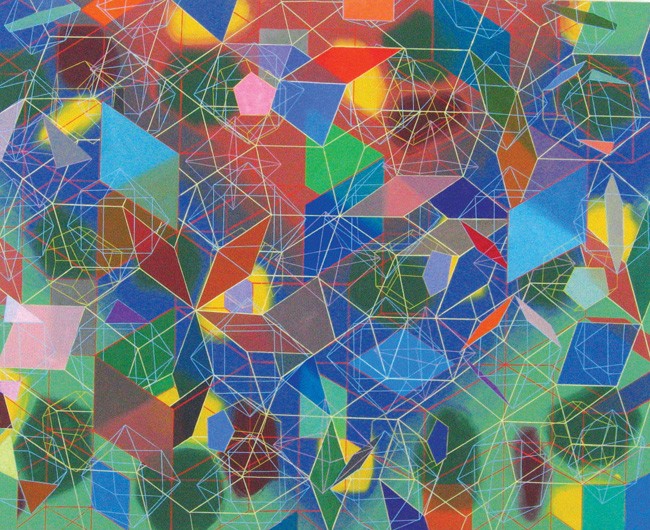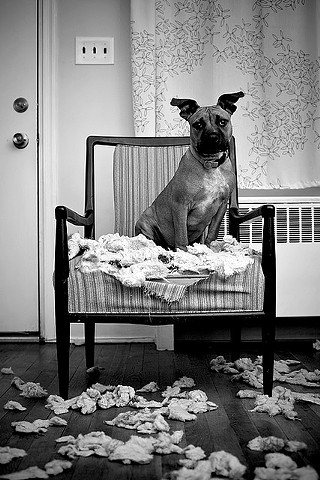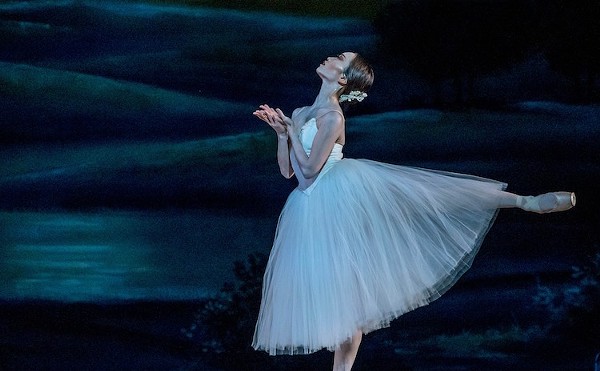Tony Robbin: A Retrospective
Through Oct. 30
Orlando Museum of Art
2416 N. Mills Ave.
407-896-4231
omart.org
When I was a kid, my father used to like to build things. Sheds and chicken coops and doghouses, mostly. He spent hours at our old Formica kitchen table, sketching out plans and dimensions and ideas for his latest projects, and as the ideas evolved, so did the drawings. What used to be simple line illustrations of things that would eventually be constructed in our yard evolved, over the years, into detailed three-dimensional abstracts of more complicated pieces that would never be built: yurts and tiny houses with elegantly simple plumbing systems and blueprint-style layouts for log cabins. Unlike his earliest sketches, these more elaborate plans were complicated and intense and a bit abstract, and they seemed to reflect the frustration that comes with aging – your brain is full of ideas and anxieties that seem to muddle into one another despite your struggle to keep them discrete.
If I could imagine what the inside of his head looked like when he was sitting at the table, struggling to organize his thoughts into a recognizable format, I think it might have looked something like this Tony Robbin retrospective.
Robbin, an artist and author whose interest in mathematics, physics and geometry is evident in even his simplest early acrylic paintings, is considered part of the Pattern and Decoration art movement, which was a reaction to the cold, industrial formalism of minimalist art that dominated the art world in the early ’70s. Artists who were part of the movement – including Joyce Kozloff, Cynthia Carlson, Miriam Schapiro, Robert Kushner – embraced color and pattern and warmer, more organic motifs.
In the earlier Robbin pieces hanging in this show it’s easy to see how his work fits into the Pattern and Decoration aesthetic. In “Kimono, 1970,” for instance, the basic abstract pattern of a floral kimono is set against a field of blue diamonds. Though the painting lacks any folds or organic movement, the effect is that of a rich tapestry. Likewise with the piece “1970-0,” in which geometric shapes are organized into pleasing, predictable patterns.
Through the 1970s, Robbin’s work increasingly focused on the interplay of lines and grids and perspective. Against richly colored fields – teals and jewel greens and mustards – he sketched out cubes layered upon cubes using squeeze bottles full of paint. The impression is one of order and chaos at the same time: The eye attempts to follow one pattern into the horizon only to find it interrupted by an equally compelling pattern that leads to a completely different horizon – they exist on the same canvas but lead to different places.
As one moves through the show, which consists almost entirely of acrylic paintings, the motif remains essentially the same – patterns attempting to create the illusion of more dimension than seems possible on a flat surface, grids that lead the viewer into infinity, more complex shapes and structures against fields that, by the 2000s, Robbin managed to infuse with even more depth by blending varying shades of one rich color to create texture.
In a book accompanying this show, Robbin is quoted as saying that the goal of the artist using mathematical models to create art should not be to “merely illustrate them.”
“The goal is to see the higher-dimensional space,” he said, “to get the feeling of being inside them and to revel in their liberating possibilities.”
Which, perhaps, is why this show reminded me of my father sitting at our kitchen table as a middle-aged man, drawing out his plans. He was neither an artist nor a mathematician, but he was trying to do, in his own way, what Robbin has been doing for much of his career: trying to see inside a space he could only imagine, a place he’d probably never get to visit in person but that he’d visit frequently in his head.
And that’s why this show, as geometric and calculated and modern as it may appear, is such a success on a human scale. After all, who doesn’t fantasize about being inside some dream space, some alternate reality, where you can look off into infinity and see nothing but possibilities?


















